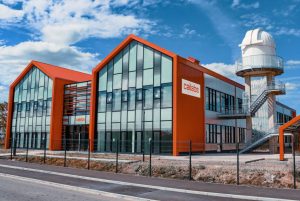Beam-Shaping with Multi-Plane Light Conversion to improve laser micro-processing
ILAS 2023
Authors: Ivan Gusachenko1, Dmitry Nuzhdin1, Kathrin Placzek2, Daniel Holder2, Yoan Di Maio3, Pauline Jullian3, Jorge Fantova4, Mikel Gomez Aranzadi4, David Grosclaude1, Gwenn Pallier1, Guillaume Labroille1
1- Cailabs, Rennes, FRANCE
2- Institut für Strahlwerkzeuge (IFSW), University of Stuttgart, Stuttgart, GERMANY
3- Manutech, St Etienne, FRANCE
4- CEIT, San Sebastian, SPAIN
Laser microprocessing using Ultra-Short Pulse (USP) lasers has been developed over the past decades thanks to their unique properties of high precision with almost no thermal effects. While more and more femtosecond lasers are available with an increasing energy per pulse, the question of an efficient exploitation becomes a key to their further development. In this paper we describe three beam-shaping strategies to improve the process efficiency based on Multi-Plane Light Conversion (MPLC).
Firstly we investigate the improvement of the efficiency by combining top-hat shaping with the use of lower wavelength. We describe a beam-shaper combined with a 300fs 515nm laser for processing of different metal samples dedicated to multiple applications (medical, etc…). LIPSS generation is studied with a 100µm square dimension in the processing plane targeting a smaller period compared to IR processing, down to 0,5µm. Drilling holes of a diameter smaller than 10µm is studied too.
Secondly we investigate the improvement of efficiency by splitting beams. We present the results with a beam-splitting module used with a 100W 1030nm 500fs laser. The drilling of cavities in stainless steel and nickel samples has been performed, including 400 holes matrices. Those cavities aim at the improvement of the tribological properties by reducing the frictions. The homogeneity of the cavities and the circularity are analyzed over the whole matrix.
At last we investigate the improvement of efficiency by using a tailored beam-shape to a specific application : the manufacturing of the mould of polymer injected projection lenses. The objective of the experiment is the generation of Fresnel-lenses style gutters on steel using a 1030nm 300fs laser. Very small (10 to 20micrometers) beam shape in the processing sample are achieved. The samples are characterized using an optical profilometer, including the gutters depth, wall slopes, and roughness.
